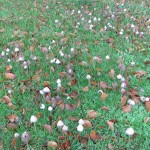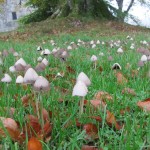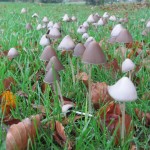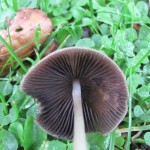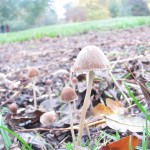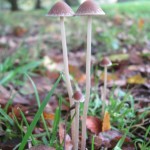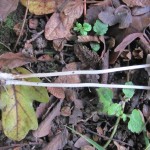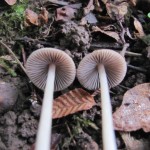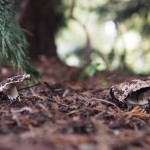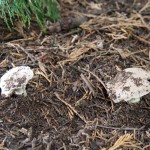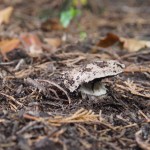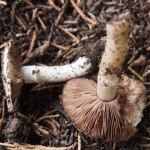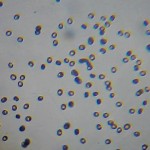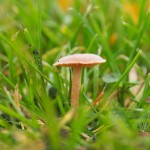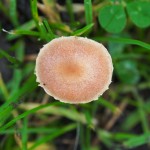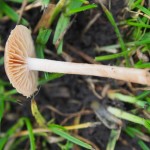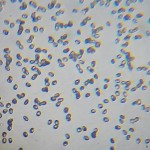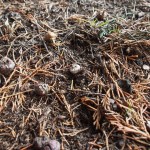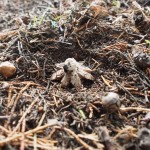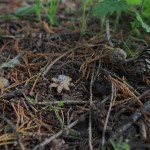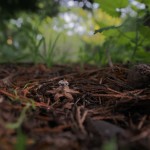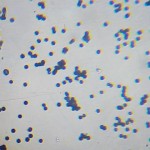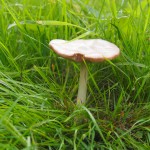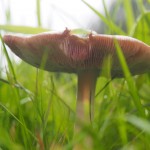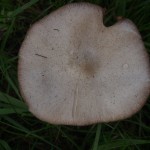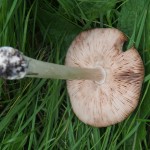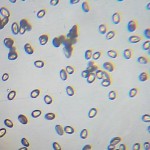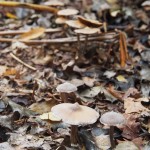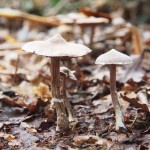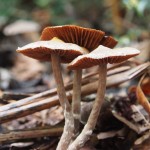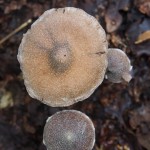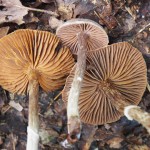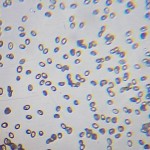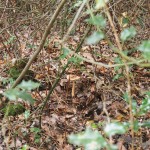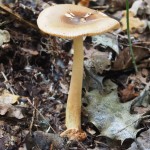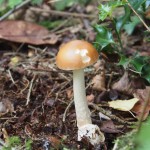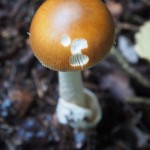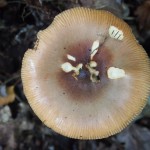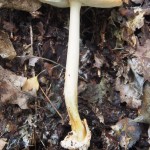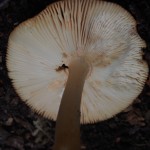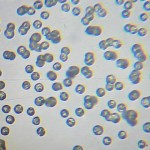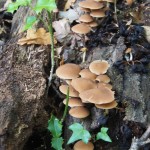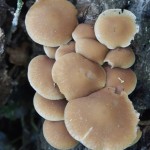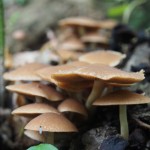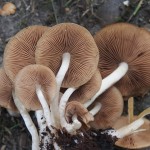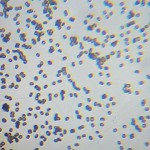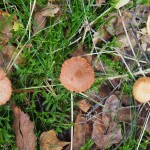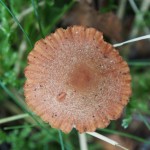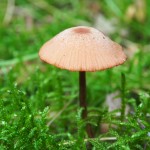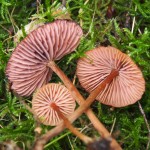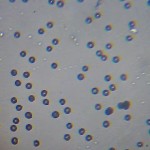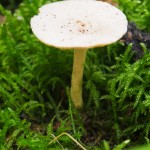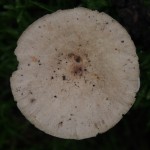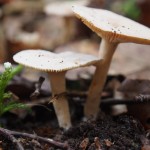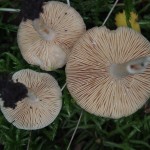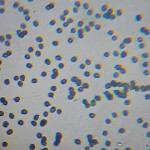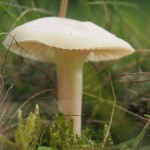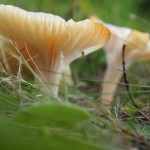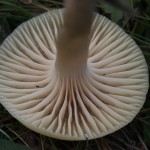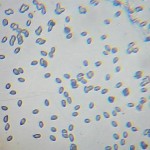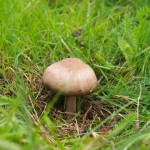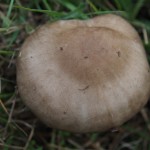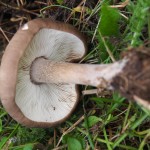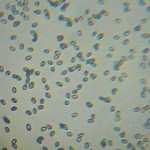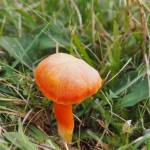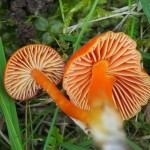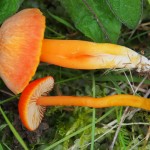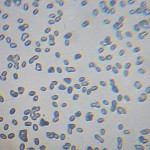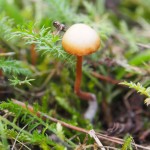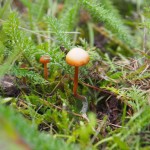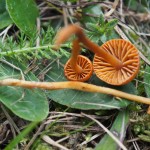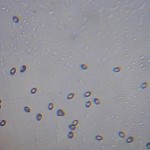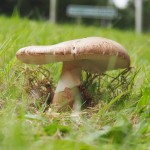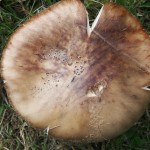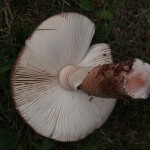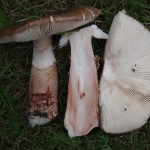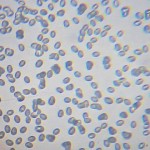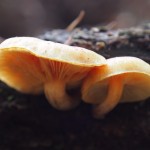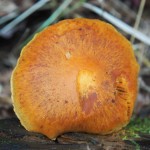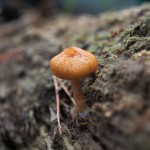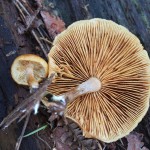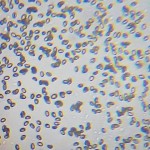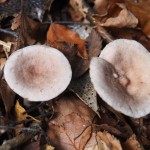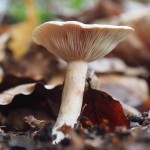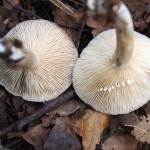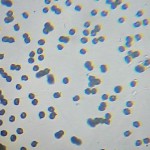1.
Common Inkcap (
Coprinus atramentarius).
-
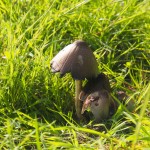
- 1. Common Inkcap
-
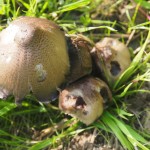
- 1. Common Inkcap
-
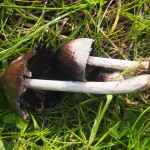
- 1. Common Inkcap
-
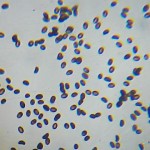
- 1. Common Inkcap
Growing in grassy field. One cluster. Cap 3-7cm wide, stem up to 10cm. No smell. Sporeprint Very dark brown. Spores 6.5-9µ x 4.5-6µ.
2. Unidentified.
-
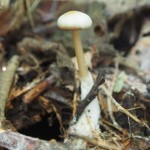
- 2. Unidentified
-
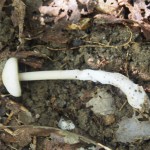
- 2. Unidentified
-
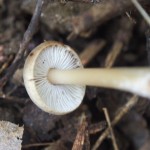
- 2. Unidentified
Growing in sweet chestnut leaf litter. Two. Cap 1-1.5cm, stem 4-5cm. Pleasant mushroom smell.
4.
The Deceiver (
Laccaria laccata).
-
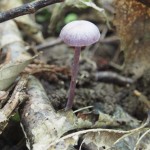
- 4. The Deceiver
-
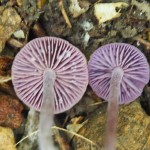
- 4. The Deceiver
-
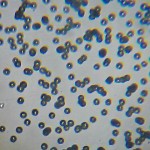
- 4. The Deceiver
Growing in sweet chestnut leaf litter. Lots scattered throughout the wood. Cap 1-3cm. Slight mushroom smell. This looks a lot like Amethyst Deceiver but the spore size is too small for that. Could be there was more than one type of Deceiver in fairly close proximity. ID is fairly likely. Sporeprint white. Spores 7-8µ x 6.5-7.5µ.
5. Unidentified.
-
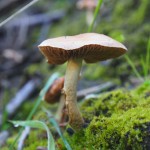
- 5. Unidentified
-
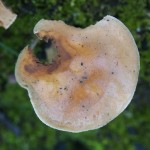
- 5. Unidentified
-
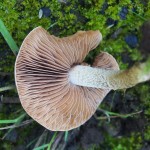
- 5. Unidentified
-
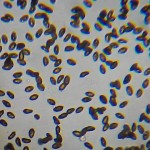
- 5. Unidentified
Growing on damp mossy earth. A few in a group. Cap 2-5cm. No smell. Sporeprint tan brown but not enough to be sure. Spores 10-12µ x 5-7µ.
6.
Trumpet Chanterelle (
Cantharellus tubaeformis).
-
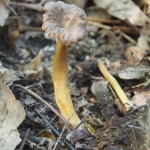
- 6. Trumpet Chanterelle
-
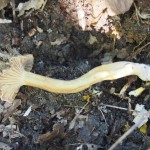
- 6. Trumpet Chanterelle
-
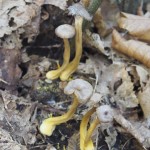
- 6. Trumpet Chanterelle
-
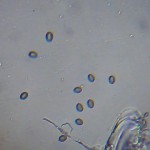
- 6. Trumpet Chanterelle
Growing on earth or buried wood near oak tree. Small group of clusters of two or three mushrooms. Cap 3cm, stem 7cm. No smell. Very characteristically chanterelle as it has folds instead of gills. I would have taken these home to eat if I'd seen this species before. Spores 9.5-10.5µ x 6.5-8µ.
7.
Fly Agaric (
Amanita muscaria).
-
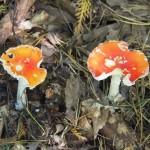
- 7. Fly Agaric
-
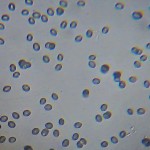
- 7. Fly Agaric
Growing near a small solitary birch tree surrounded by pine and oak trees. Three. Cap 6-7cm. No smell. I wouldn't normally to bother record Fly Agarics but these were interesting because of their small sad size and the small sad size of their solitary birch symbiot. Sporeprint white. Spores 8-10µ x 6.5-8µ.
8.
Lepiota felina.
-
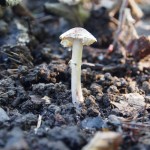
- 8. Lepiota felina
-
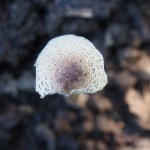
- 8. Lepiota felina
-
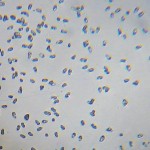
- 8. Lepiota felina
Growing in humus near pine and deciduous trees. Three or four scattered. Cap 1.5-2cm. Slight mushroom smell. Quite an attractive little mushroom but I didn't get very good pictures. ID is very likely. Sporeprint white. Spores 5.5-7µ x 3-4µ.
9. Unidentified.
-
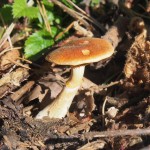
- 9. Unidentified
-
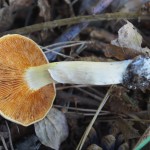
- 9. Unidentified
-
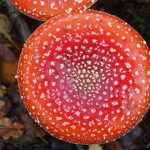
- 9. Unidentified
-
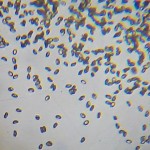
- 9. Unidentified
Growing in humus near pine tree. One and a cluster of two. Cap 3-4cm. No smell. This really looks like a Common Rustgill but the spores would then be warted and much bigger, unless I made a clerical error somehow. Sporeprint pale brown but not enough to be sure. Spores 6-7.5µ x 3-5µ.
10.
Blushing Wood Mushroom (
Agaricus silvaticus).
-
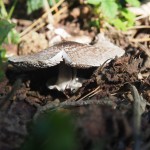
- 10. Blushing Wood Mushroom
-
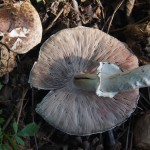
- 10. Blushing Wood Mushroom
-
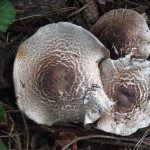
- 10. Blushing Wood Mushroom
-
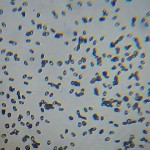
- 10. Blushing Wood Mushroom
Growing under pine. Small troop. Cap 4-7cm. Smell mushroomy and mildly aniseed. Very tasty. I thought this was The Prince or perhaps Scaly Wood Mushroom when I found it, but the spore size means it must be Blushing Wood Mushroom. Eaten. ID is almost sure. Sporeprint brown. Spores 4.5-6.5µ x 2.5-4µ.
11.
Blueleg Brownie (
Psilocybe cyanescens).
-
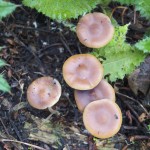
- 11. Blueleg Brownie
-
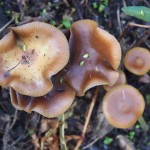
- 11. Blueleg Brownie
-
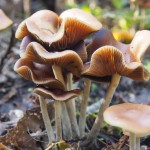
- 11. Blueleg Brownie
-
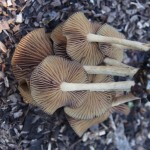
- 11. Blueleg Brownie
-
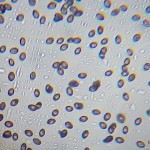
- 11. Blueleg Brownie
-
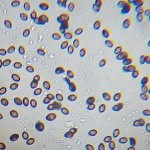
- 11. Blueleg Brownie
Growing in wet sawdust in a wood clearing. Abundant clusters. Cap up to 6cm. No smell. Has the very characteristic wavy cap folds of this mushroom. This is classed as uncommon but I see it quite a lot now. Said to be strongly hallucinogenic but that isn't my thing. Sporeprint Dark brown, perhaps purplish. Spores 9-10.5µ x 6-7.5µ.
12.
Common Birds Nest (
Crucibulum laeve).
-
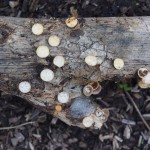
- 12. Common Birds Nest
-
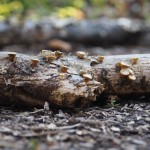
- 12. Common Birds Nest
-
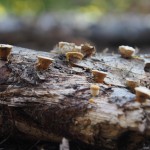
- 12. Common Birds Nest
Growing on dead branch. Many scattered over the branch. Cups up to 5mm across.
13.
Magpie Inkcap (
Coprinus picaceus).
-
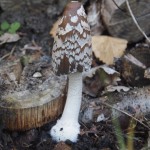
- 13. Magpie Inkcap
-
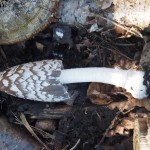
- 13. Magpie Inkcap
-
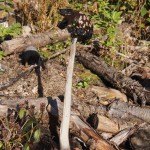
- 13. Magpie Inkcap
-
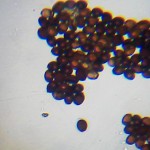
- 13. Magpie Inkcap
Growing on earth in clearing in wood. Several scattered around. Cap 6cm high but other broken bigger ones were around. Tallest had 35cm total height. No smell. At 35cm this is the tallest mushroom that I've ever found. Sporeprint black. Spores 13-15µ x 10-11.5µ.
14.
Lactarius controversus.
-
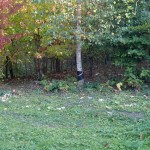
- 14. Lactarius controversus
-
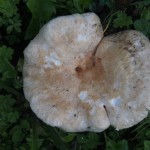
- 14. Lactarius controversus
-
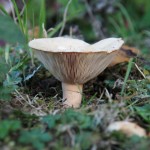
- 14. Lactarius controversus
-
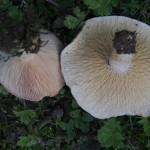
- 14. Lactarius controversus
-
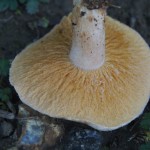
- 14. Lactarius controversus
-
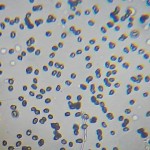
- 14. Lactarius controversus
Growing around tree that looks a bit like birch but could easily be a species liked by L.controversus. Many growing in a ring. Cap 4-13cm. Little smell but perhaps a hint of blue cheese? Many older ones had gills that had totally disintegrated into a kind of furry mass. These L.controversus with disintegrated gills must be infected by Hypomyces lateritius (another type of fungus). Very weird. ID is almost sure. Sporeprint white. Spores 5.5-8µ x 4.5-6µ.
15.
Type of Webcap.
-
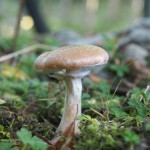
- 15. Type of Webcap
-
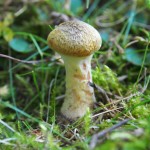
- 15. Type of Webcap
-
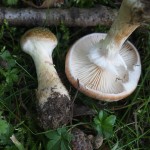
- 15. Type of Webcap
-
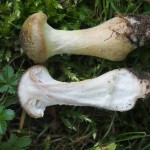
- 15. Type of Webcap
-
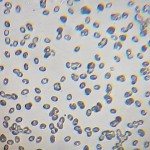
- 15. Type of Webcap
Growing in moss near small leaved deciduous tree. Two. Cap 4cm, stem 5cm. No smell. Bulb at the stem base. There are a lot of webcaps like this and I'm not able to pin down exactly what species this one is. Sporeprint whitish but not enough to be sure. Spores 7-9µ x 4.5-6.5µ.
16.
Veiled Poisonpie (
Hebeloma mesophaeum).
-
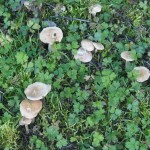
- 16. Veiled Poisonpie
-
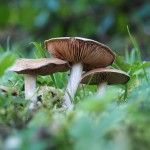
- 16. Veiled Poisonpie
-
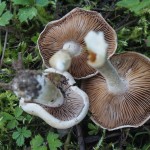
- 16. Veiled Poisonpie
-
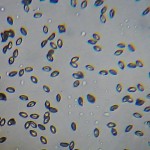
- 16. Veiled Poisonpie
Growing on mossy bank near trees. Many scattered around. Cap 2-4.5cm. Smell of radish. This could easily be another poisonpie but the cap size/colour, spore size and habitat points to this one. ID is very likely. Sporeprint tan. Spores 9-11µ x 4.5-6.5µ.
17.
Macrolepiota konradii.
-
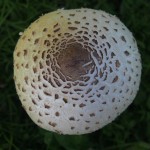
- 17. Macrolepiota konradii
-
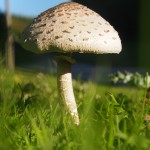
- 17. Macrolepiota konradii
-
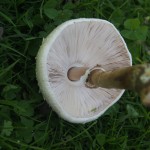
- 17. Macrolepiota konradii
-
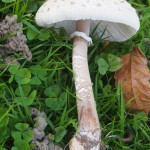
- 17. Macrolepiota konradii
-
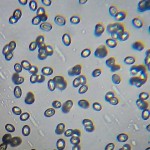
- 17. Macrolepiota konradii
Growing on grassy bank amongst small trees. Several trooping. Cap 7-11cm, stem 10cm. Young ones with no smell, old ones with unpleasant smell. ID is very likely. Sporeprint white. Spores 10.5-15µ x 8-10µ.
18.
White Saddle (
Helvella crispa).
-
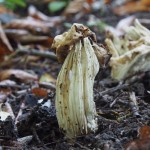
- 18. White Saddle
-
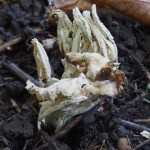
- 18. White Saddle
-
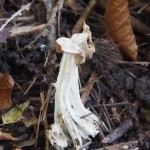
- 18. White Saddle
-
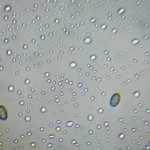
- 18. White Saddle
-
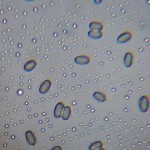
- 18. White Saddle
Growing in earth at edge of wood. Group of four. 4cm wide, 8-11cm high. I've found White Saddles before but one of these was huge and by far the biggest I've ever found. Spores 15.5-19µ x 9.5-11.5µ.
19. Unidentified.
-
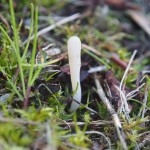
- 19. Unidentified
-
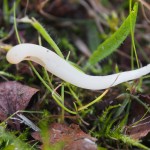
- 19. Unidentified
-
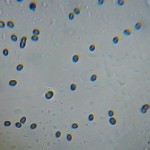
- 19. Unidentified
Growing on mossy bank beside path. One. 2.5cm high. This is hard to identify since there was only one small specimen. Could be one of the Clubs. Perhaps Handsome Club but that is supposed to have a prominent beak on the spores which I can't see on my spores. Spores 7-8.5µ x 5.5-7µ.

